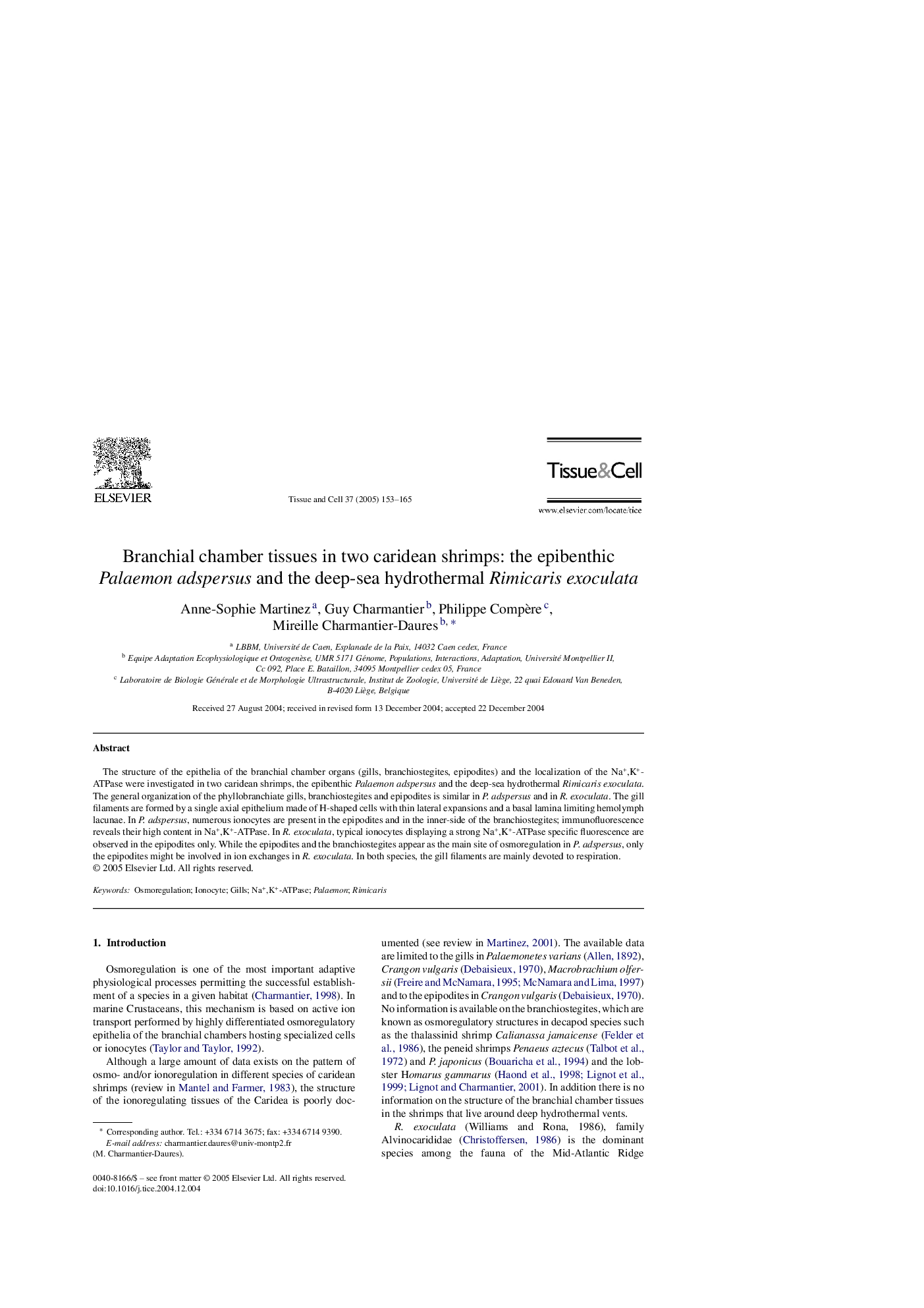| Article ID | Journal | Published Year | Pages | File Type |
|---|---|---|---|---|
| 10959743 | Tissue and Cell | 2005 | 13 Pages |
Abstract
The structure of the epithelia of the branchial chamber organs (gills, branchiostegites, epipodites) and the localization of the Na+,K+-ATPase were investigated in two caridean shrimps, the epibenthic Palaemon adspersus and the deep-sea hydrothermal Rimicaris exoculata. The general organization of the phyllobranchiate gills, branchiostegites and epipodites is similar in P. adspersus and in R. exoculata. The gill filaments are formed by a single axial epithelium made of H-shaped cells with thin lateral expansions and a basal lamina limiting hemolymph lacunae. In P. adspersus, numerous ionocytes are present in the epipodites and in the inner-side of the branchiostegites; immunofluorescence reveals their high content in Na+,K+-ATPase. In R. exoculata, typical ionocytes displaying a strong Na+,K+-ATPase specific fluorescence are observed in the epipodites only. While the epipodites and the branchiostegites appear as the main site of osmoregulation in P. adspersus, only the epipodites might be involved in ion exchanges in R. exoculata. In both species, the gill filaments are mainly devoted to respiration.
Related Topics
Life Sciences
Agricultural and Biological Sciences
Agricultural and Biological Sciences (General)
Authors
Anne-Sophie Martinez, Guy Charmantier, Philippe Compère, Mireille Charmantier-Daures,
